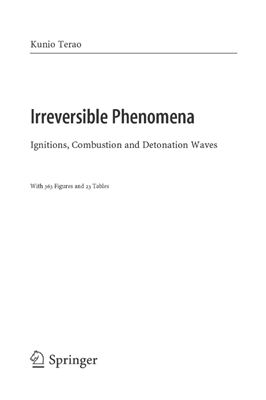Sрringer, 2007. 410 p. ISBN:3642080685.
This book is focused on the latter applications and offers a rather unique viewpoint in comparison with the existing combustion literature. The central argument of the book and the subsequent applications are clearly laid out and discussed, resulting in a very interesting read. The book provides valuable access to numerous experimental and theoretical results less readily available in the English literature. The book should be considered a specialist.
In his book, Prof. K. Terao develops a theory based on the second law of thermodynamics and which intends to model irreversible phenomena. The paper ends with a list of references covering both the history and the current development of ignition processes. The book will surely be useful to engineers. Researchers will also find the description of experimental devices and experimental data conceing these irreversible phenomena.
This book is focused on the latter applications and offers a rather unique viewpoint in comparison with the existing combustion literature. The central argument of the book and the subsequent applications are clearly laid out and discussed, resulting in a very interesting read. The book provides valuable access to numerous experimental and theoretical results less readily available in the English literature. The book should be considered a specialist.
In his book, Prof. K. Terao develops a theory based on the second law of thermodynamics and which intends to model irreversible phenomena. The paper ends with a list of references covering both the history and the current development of ignition processes. The book will surely be useful to engineers. Researchers will also find the description of experimental devices and experimental data conceing these irreversible phenomena.

